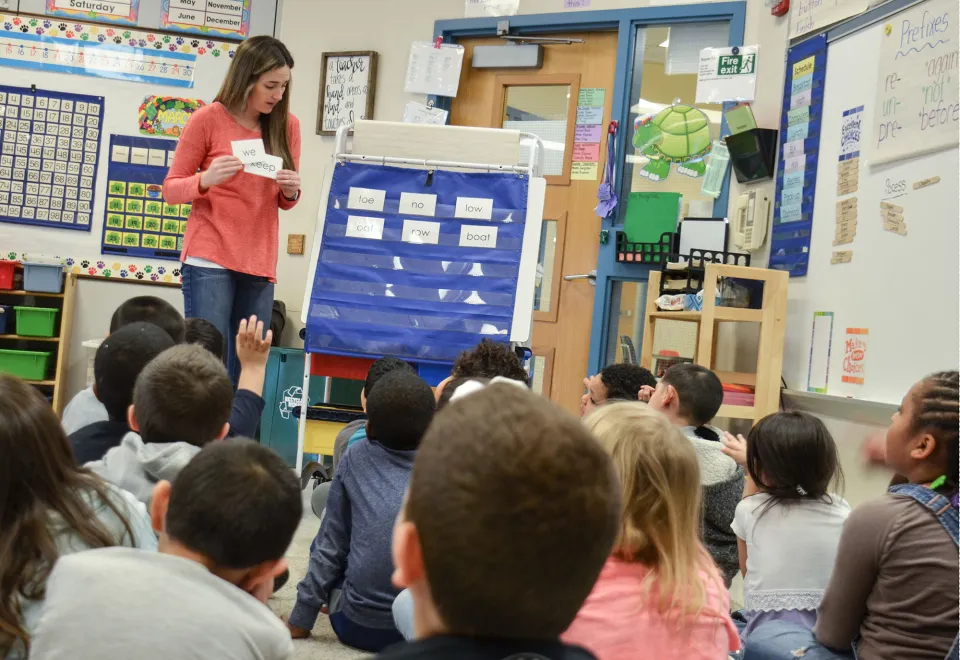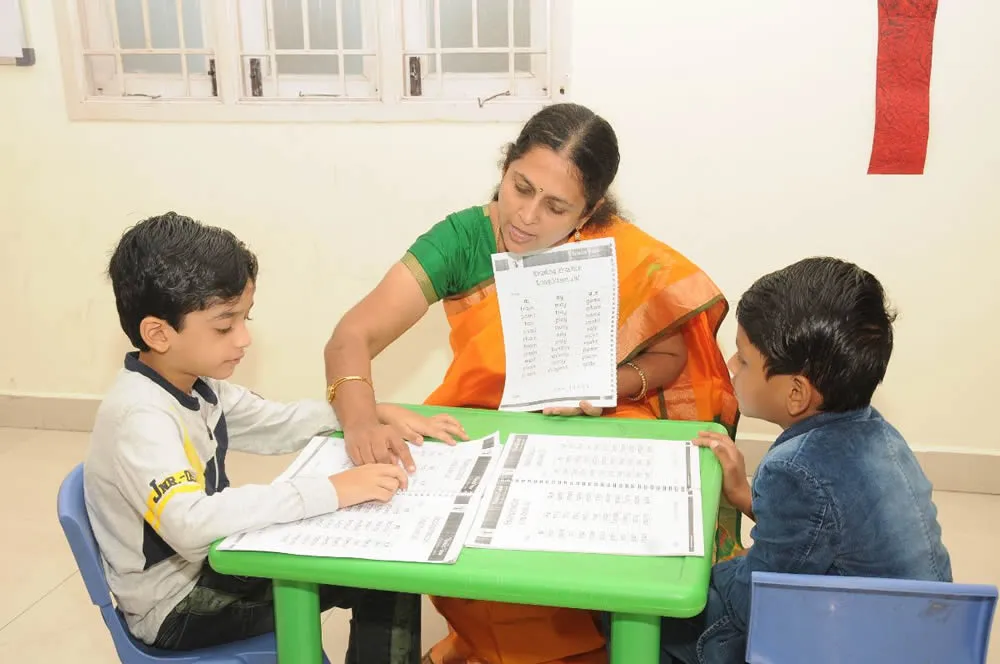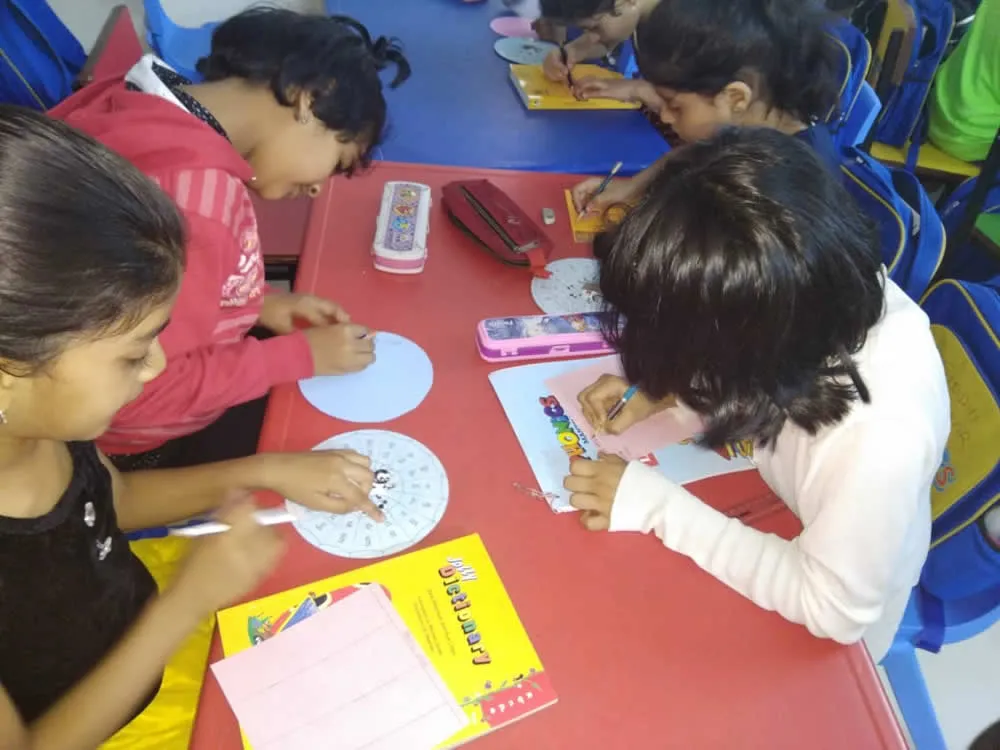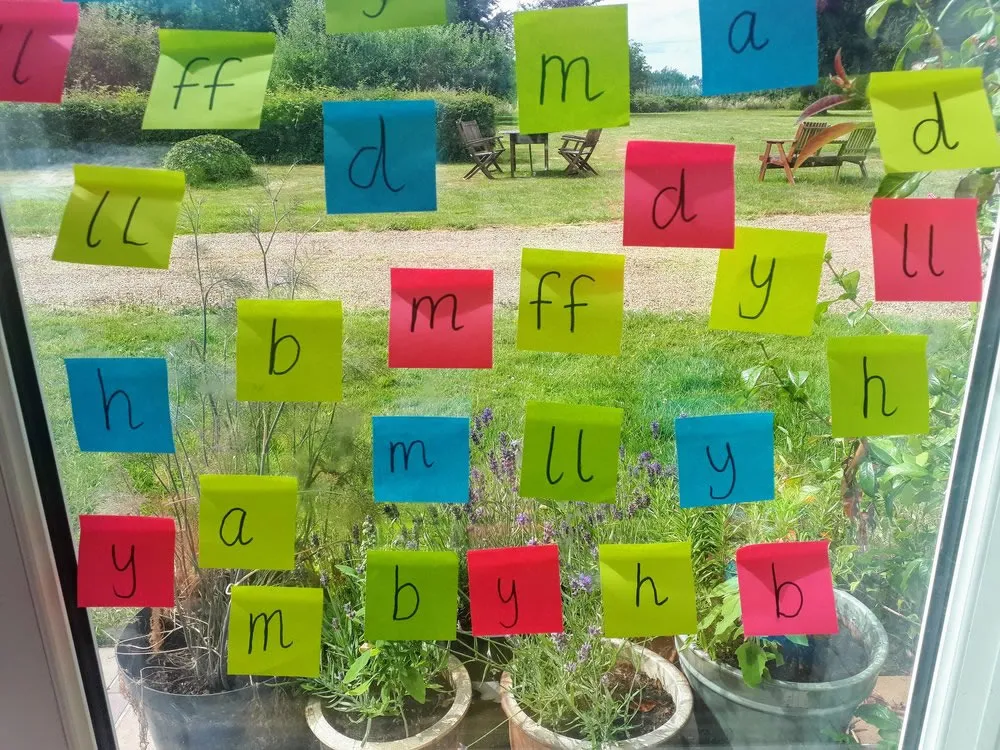Phonics Training For Teachers Online

Source: wp
Phonics Training For Teachers Online
In today’s digital era, enhancing your teaching skills has never been easier. The Phonics Training For Teachers Online, brought to you by Vidhyanidhi Education Society (VES), is designed to bring the classroom to you, offering top-tier phonics training in a flexible and accessible format. This unique Phonics Training For Teachers Online course is built on the latest phonics teaching strategies, aimed to simplify the process of teaching reading and spelling to students.
The Phonics Training For Teachers Online promises to equip teachers with a toolkit of practical skills, ensuring a bright literacy future for their learners. Experience the joy of witnessing your students thrive under your guidance with this transformative online training.
Table of Content
- Career Scope For Certified Phonics Teachers
- Benefits Of Doing Certified Phonics Course From VES
- Course Content For Phonics Training For Teachers
- Duration Of Certified Phonics Course
- Eligibility For Certified Phonics Course
- Phonics Teacher Training Courses In Mumbai
- Why is Phonics Important in Teaching Reading?
- What are the 42 Letter Sounds?
- Phonics How to Teach?

Source: phonicspower
Career Scope For Certified Phonics Teachers
We’re proud to inform you that our ex-students have reached significant milestones in their careers as phonics educators and mentors. Numerous alumni are now working in the prestigious state, ICSE, CBSE, and IB schools. VES’s phonics training certification has played a pivotal role in their career advancement and has helped establish many successful phonics classes.
On completing VES’s Phonics Training For Teachers Online course, a range of promising Career Scope For Certified Phonics Teachers will be available:
- Certified phonics teacher in state or international schools.
- Special needs or remedial teacher.
- In-service teacher with potential for advancement.
- Entrepreneur, running your phonics classes.
- Trainer of phonics teachers.
- Phonics curriculum designer or content designer.
- Parents, guiding your child’s English language development.
- New career opportunities.
Benefits Of Doing Certified Phonics Course From VES
Benefits Of Doing Certified Phonics Course From VES gives:
- Explicit directions to set up your phonics classes for kids.
- A comprehensive guidebook for teachers.
- Over 300 printable, ready-to-implement worksheets to kickstart your phonics teaching journey.
- A selection of 42 printable flashcards as visual aids.
- A word bank of over 650 words with digraphs and distinct vowel sounds like ai, oa, ay, ow, ei, etc.
- Additional teaching resources.
- Suggestions for handling day-to-day lessons.
- A globally recognized certification upon Phonics Training For Teachers Online course completion.
Contact our course coordinator @ +919869866277 / +919869546913 for further details
For Downloading the brochure click here

Source: phonicspower
Course Content For Phonics Training For Teachers
Course Content For Phonics Training For Teachers will involve the following subjects:
- The importance of Phonics in childhood education
- The array of Phonics methods available
- Comparing the Whole Language Approach with Phonics
- Using storytelling, movements, and songs to teach letter sounds
- Proficiency in letter crafting techniques
- Sound combination techniques for proficient reading
- Sound isolation methods for effective spelling
- Familiarity with initial and final blends
- Learning digraph sounds through engaging storytelling and movements
- Distinguishing between Digraphs and Blends
- Approaches to handling complex words
- The rules that dictate Phonics
- Various vowel sounds and their associated written forms
Duration Of Certified Phonics Course
The Duration Of Certified Phonics Course is meticulously arranged for 18 hours.
Eligibility For Certified Phonics Course
The Eligibility For Certified Phonics Course is for anyone with basic proficiency in the English language.
Phonics Teacher Training Courses In Mumbai
Our ‘Certificate Program in Phonics Teacher’s Training’ at VES is formulated based on the prestigious Synthetic Phonics Methodology from the UK. We offer a blend of theoretical knowledge and practical training. Our commitment is to offer an exceptional learning environment and groom you into an elite phonics educator.
Key aspects of our Phonics Teacher Training Courses In Mumbai:
- Regularly starting new batches throughout the year
- Reasonable course fee
- Small class strength for personalized guidance
- Fully furnished, air-conditioned classrooms
- Expert trainers
- Provision of study materials, lectures, presentations, live demonstrations, and multimedia teaching aids
- Support to start your phonics classes – we answer all your queries about course pacing, center setup, and lesson planning.
You’ll surely be enthusiastic to start your Phonics Training For Teachers Online and offline at VES after considering these benefits!
For admissions and queries please connect with us at 9869546913 / 9869866277
For Downloading the brochure click here

Source: phonicsmantra
Why is Phonics Important in Teaching Reading?
Phonics is Important in Teaching Reading because it helps children understand the relationship between letters and sounds. When learning to read, children need to recognize and decode individual sounds in words, and phonics provides them with the tools to do so.
By learning the sounds that different letters and letter combinations make, children can break down words and read them accurately. It enables them to sound out unfamiliar words, build their vocabulary, and develop strong reading skills. It is like a key that unlocks the door to reading, giving children the ability to decode words and comprehend written text more effectively, making Phonics Important in Teaching Reading.
What are the 42 Letter Sounds?
The 42 Letter Sounds refer to the basic sounds that are often taught to young children in English-speaking countries as they are learning to read and write. These are the foundation of phonics and include both simple individual letter sounds and more complex multi-letter phonograms.
Here are the 42 Letter Sounds (phonemes):
- a: as in apple
- b: as in bat
- c: as in cat
- d: as in dog
- e: as in elephant
- f: as in fish
- g: as in gorilla
- h: as in hat
- i: as in igloo
- j: as in jump
- k: as in kangaroo
- l: as in lion
- m: as in monkey
- n: as in nose
- o: as in orange
- p: as in pig
- q: as in queen
- r: as in rabbit
- s: as in snake
- t: as in tiger
- u: as in umbrella
- v: as in vulture
- w: as in whale
- x: as in a box (at the end of words)
- y: as in yellow
- z: as in zebra
- ch: as in chip
- sh: as in ship
- th: as in thin
- th: as in then
- ng: as in ring
- ai: as in rain
- ee: as in tree
- igh: as in the night
- oa: as in a boat
- oo: as in a book
- oo: as in moon
- ar: as in a car
- or: as in for
- ur: as in fur
- ow: as in cow
- oi: as in coin
Each sound has several variations in spelling. For instance, the sound /a/ can be spelled as “a” (apple), “ai” (rain), “ay” (day), and “a_e” (make). Similarly, the /ee/ sound can be spelled “ee” (tree), “ea” (bead), “e” (me), “y” (happy), “ey” (key), “ie” (chief), and “e_e” (these).
For Course fees please call or Whatsapp on 9869546913 / 9869866277.
For Downloading the brochure click here

Source: squarespace
Phonics How to Teach?
Teaching phonics is a crucial aspect of early literacy development.
Here’s an existing way to approach Phonics How to Teach:
Start with the basics
Begin by introducing the individual letter sounds, also known as phonemes. Teach students to recognize and produce the sounds associated with each letter of the alphabet. Use multisensory techniques, such as visual aids, songs, and gestures, to engage learners and reinforce their understanding.
Teach letter-sound correspondences
Once students are familiar with the individual letter sounds, move on to teaching them the letter-sound correspondences. Explain that certain letters or letter combinations represent specific sounds. For example, ‘c’ makes the /k/ sound, ‘sh’ makes the /sh/ sound, and so on. Provide ample practice opportunities for students to recognize and apply these correspondences.
Introduce blending and segmenting
Blending involves combining individual sounds to form words, while segmenting is the opposite process of breaking words into individual sounds. Teach students how to blend and segment sounds through activities like word building, word manipulation games, and phoneme isolation exercises. Gradually increase the complexity of the words as students become more proficient.
Incorporate word families and rhyming
Introduce word families, which are groups of words that share a common phonetic pattern, such as -at (cat, hat, sat). Exploring word families helps students recognize common sound patterns and generalize their understanding of new words. Additionally, emphasize rhyming activities to develop phonological awareness and reinforce the connection between similar sounds.
Provide decodable texts
As students gain confidence in their phonics skills, offer decodable texts that contain a high percentage of words they can decode based on the phonics principles they have learned. These texts allow students to practice reading independently and apply their phonics knowledge in context.
Practice sight words
While phonics is essential for decoding unfamiliar words, many common words cannot be easily sounded out. Teach these high-frequency sight words as whole units that students recognize instantly, as they often appear in texts and are vital for fluent reading.
Continuously assess and differentiate instruction
Regularly assess students’ progress to identify areas that require further support. Adjust your instruction based on individual needs, providing targeted practice and interventions as necessary. Differentiate instruction approach by additional reinforcement for struggling learners or offering enrichment activities for advanced learners.
Remember that phonics instruction should be systematic, explicit, and cumulative, building upon previously learned skills. Providing ample opportunities for practice, reinforcement, and application will help students develop strong phonics skills, laying the foundation for proficient reading and spelling abilities.
Phonics Training For Teachers Online
“Glorify your teaching aptitudes with Vidhyanidhi’s Phonics Training For Teachers Online Programme.”
For added details, Call / Whatsapp us at +919869546913 / +919869866277
For Downloading the Phonics Training For Teachers Online brochure Click Here
FAQs
How to become a Phonics teacher?
Eager to teach phonics? Start with a teaching certification, then sharpen your skills with VES's Phonics Teacher Training Programme. Your journey awaits!
What is the most effective way to teach Phonics?
The most effective way to teach phonics is systematic: start with single sounds, move to blend sounds into words, then tackle complex sounds. Practice is key!
How to teach blends and digraphs?
Teach blends by combining sounds (/b/ + /l/ = 'bl'). Digraphs are two letters making one sound, like 'sh' in 'ship'. Use visuals and practice activities.
What is Phonics?
Phonics is a teaching method associating sounds with letters or letter groups, facilitating reading and spelling in the English language.




